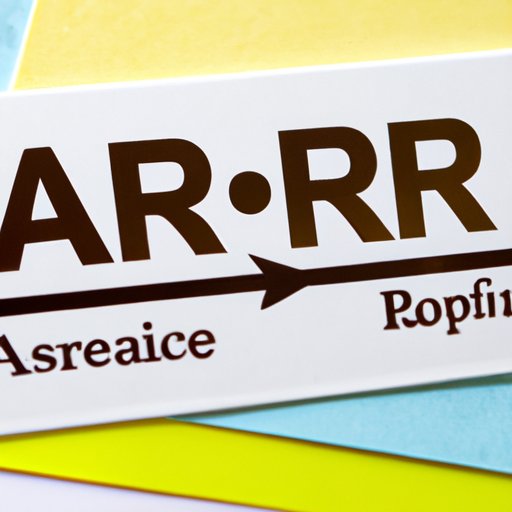
I. Introduction
Buying a car, taking a loan or getting a credit card can be confusing. There are so many different numbers and terms that it’s hard to know what you’re really paying. One of those key figures is the Annual Percentage Rate, or APR. Understanding what APR means and how it works is critical to making informed financial decisions. This article will provide you with a complete guide to understanding and calculating APR, as well as tips and tricks for getting the best deals and lowering your APR.
II. Mastering APR: A Beginner’s Guide to Understanding and Calculating Annual Percentage Rates
APR is the annual cost of borrowing money. It includes the fees and interest rate charged on a loan or credit card. Knowing the APR is important because it lets you compare different loans or credit cards to see which one is the best deal.
The formula for calculating APR is simple: APR = (interest rate x number of periods in a year) + fees.
For example, if you took out a $10,000 loan with a 5% interest rate and a $500 loan origination fee, your APR would be 6.18%. [(0.05 x 12) + 0.05 = 0.6 or 6%, + 0.01 or 1% for the fee = 6.18% APR]
One practical tip is to ask for an itemized list of all the fees associated with a loan or credit card. This will give you a better understanding of the total costs.
III. APR Secrets: How to Get the Best Deals on Loans and Credit Cards
The best way to find the lowest APR is to shop around. Check with multiple lenders and credit card companies to see who offers the best rates.
You can also try negotiating with lenders to get a lower APR. If you have strong credit and a solid payment history, you may be able to convince lenders to reduce their rates.
When shopping for loans or credit cards, be sure to read the fine print. Some lenders may offer a low introductory APR that jumps up after a few months.
IV. APR vs. Interest Rate: What’s the Difference and Why Does it Matter?
APR includes all the fees and interest rate associated with a loan or credit card, while interest rate only reflects the cost of borrowing the principal amount. The difference between the two can be significant.
For example, a 30-year mortgage with a 5% interest rate and $5,000 in closing costs would have an APR of 5.09%, which is higher than just the interest rate. This is because the fees are spread out over the life of the loan, making the total cost of borrowing higher.
It’s important to understand the difference between APR and interest rate because it can impact the total cost of borrowing. Always factor in the APR when comparing loans or credit cards.
V. APR Hacks: How to Lower Your APR Easily and Quickly
One way to lower your APR is through refinancing. Refinancing allows you to take out a new loan or credit card with a lower APR, and use it to pay off your existing debt.
You can also try negotiating with lenders to lower your APR. If you have a good payment history and a solid credit score, lenders may be willing to reduce their rates to keep your business.
Your credit score is also a major factor in determining your APR. Improving your credit score can help you get lower rates when shopping for loans or credit cards.
VI. APR for Savvy Shoppers: How to Compare Offers and Choose the Best Loan or Credit Card
When comparing different APR offers, be sure to look at the total cost of borrowing over the life of the loan or credit card. This includes all the fees and interest charges.
Other factors to consider when choosing a loan or credit card include the repayment terms, maturity date, penalties for late payments, and any incentives or rewards programs.
Do your research and shop around to find the best deal that fits your specific needs and budget.
VII. Conclusion
APR is an important financial term to understand. It can impact the total cost of borrowing and determine which loan or credit card is the best deal. By shopping around, negotiating with lenders, and being aware of the difference between APR and interest rate, you can make informed financial decisions that will save you money.
Don’t be afraid to ask questions and seek out advice from financial experts. By taking action and being proactive about your finances, you can achieve your financial goals and build a solid financial future.




